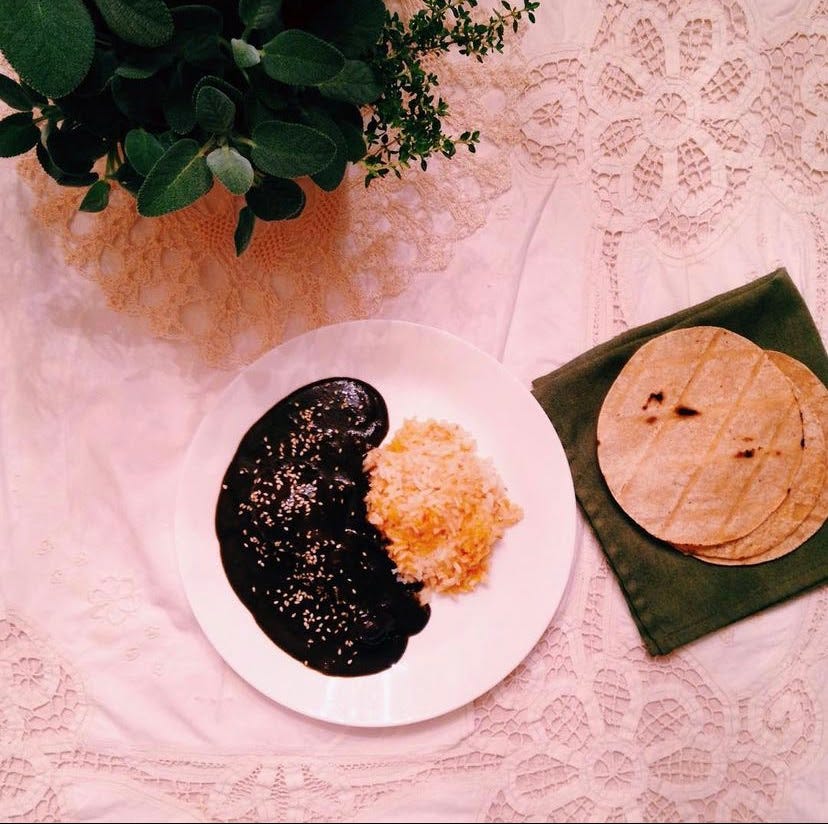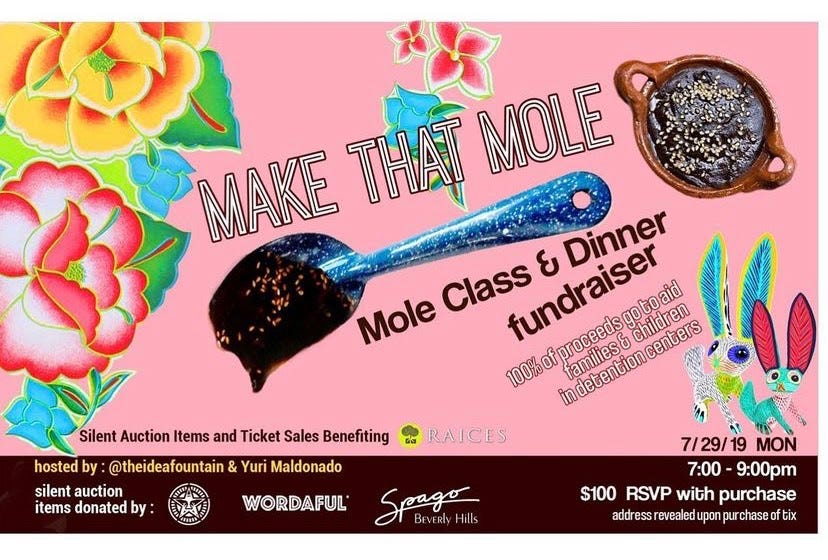Eat | Cray | Love
Food as healing, connection, and preservation
By Yuri Maldonado
If you would’ve asked me if I liked cooking or if I had a favorite dish to make when I was 21, I probably would have laughed and run away laughing at the question. In fact, I did many times. I hated the thought of cooking so much that I associated cooking as society’s way to perpetually keep women in the kitchen. You see, I come from a matriarchal lineage, a family composed of strong-willed women; I had no choice but to become that as I grew older. When my mom made me help her in the kitchen, it was mostly to punish me for not helping her clear the table and wash the dishes. She would add that it was our duty as women to learn to run a clean household. She, of course, had me do all the tedious activities like crack and shell peanuts for the mole she was making from scratch. The millennial in me didn’t agree with those statements. The Americanized me detested that part of my Mexican culture. As a philosophy and social justice major while in college, I thought of these comments as the chains which held feminine power back from leadership positions. But we can be very hard on our parents when we are younger.
One year later, I fell in love and I did what many do for love — I learned to cook, obviously, that is what every young woman does! I now laugh at how quickly that changed my perspective on the subject of women cooking. I was an overachiever in training and, of course, I made mole poblano as my first dish for the man I fell in love with. It sealed the deal and within a month of knowing this person, I was suddenly his girlfriend and we even talked about growing old together. If you know a little bit about mole poblano, and if you’ve ever read, “Like Water for Chocolate,” this Mexican immigrant who was raised in NY was living her own version of that novel written by Laura Esquivel. I met my son’s father while in college and we connected on a MySpace group I created, which I called “Mexican Candy & Paletas.” It was homage to Mexican sweets and ice pops which were hard to find in NY while growing up in the 90s and 2000s. We quickly became pen pals and connected over food and my newfound interest in the Chicano movement, which was strong in the 60s in the city where he was from — Los Angeles.

Our novel-like love didn’t last, but I did move to Los Angeles, and I stayed for the food. Mexican food in LA is the closest to the food found in Mexico — well, at least taqueros in the streets of LA can go head-to-head with taqueros in CDMX (Ciudad de México), and many taco enthusiasts can attest to that. That sweet cinnamon smell from churro trucks I saw lined up near Echo Park on my first drive through LA was the closest thing to the smell that engulfed my town’s zócalo, which is a central court square, very much like a promenade. I grew up on the outskirts of a volcano — El Popocatépetl, aka El Popo. This is an active volcano which covers several municipal towns in the state of Puebla. According to sciencedaily.com, El Popo is a stratovolcano, a volcano with many layers. The lava that flows from stratovolcanoes is highly viscous, it cools and hardens before spreading very far. Interestingly enough, mole paste is traditionally made on a volcanic grinding stone, called metate. The experience of eating mole poblano is similar to a volcanic eruption, it’s highly spicy on the first bite with a sweet aftertaste.

Mole poblano is made with about twenty ingredients, including nuts, chiles, cacao and chocolate, which helps balance the heat of the chiles. In Mexico, there are several variations of mole sauce: the uncommonly known version from the northern state of Zacatecas is spicier and does not contain chocolate; the Oaxacan mole negro is darker and contains more chocolate; mole poblano has a more rustic red hue and is subtle in taste, as it uses less chocolate.

In 2019, American journalists shared reports from border detention centers, all tragic and heartbreaking. I did what the women in my family do when things are not going well and took matters into my own hands to help fix the issue and bring some form of support for the families. I used food to gather some friends and colleagues and hosted a mole class with Rocio, an LA based female chef known as La Diosa de Los Moles, the Mole Goddess. We had items up for auction, and one of them was Obey Giant’s “We the People: Dignity” signed print. This art series was created as an effort meant to celebrate an appreciation for ethnic, cultural, and religious diversity in the US, released in 2017. The images of DIGNITY, the piece donated, also circulated during the Women's March of 2018. The mole class and dinner garnered $3,000 in donations towards Families Belong Together, a Texas-based foundation providing direct legal aid to the families who were separated at the border.

Indeed, feminine strength and unity is a power to be reckoned with. Food as a tool to bring people together will forever be victorious. I never imagined or understood how powerful it is to know how to cook and how important it was for me to learn my mother’s mole recipe for the conservation of that ancestral knowledge.
P.S. If you ask me how I enjoy mole Poblano the most, I’d have to say in a torta. I dare you to try it. You can thank me later.






